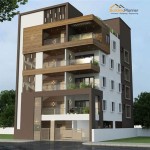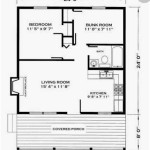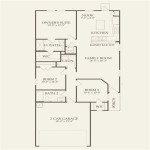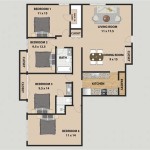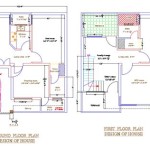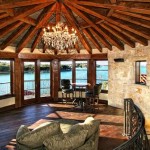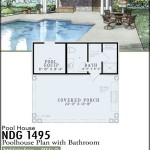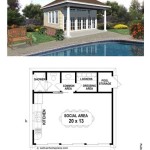House Plans and Roof Pitch: A Vital Consideration
Roof pitch plays a significant role in the aesthetics, functionality, and cost of a house. Understanding its impact on various aspects of house design is crucial for anyone embarking on a building or renovation project. This article explores the connection between house plans and roof pitch, providing valuable insights into this critical design element.
Roof pitch, often expressed as a ratio (e.g., 4/12), represents the rise of the roof over its run. A 4/12 pitch indicates that the roof rises four inches vertically for every twelve inches of horizontal distance. This seemingly simple measurement has profound implications for the overall design and performance of a house.
One of the most noticeable influences of roof pitch is on the architectural style of a home. Steeply pitched roofs are commonly associated with traditional styles such as Victorian, Tudor, and Cape Cod. These dramatic rooflines create a sense of grandeur and offer practical advantages in snowy climates, shedding snow more effectively. Conversely, low-pitched or flat roofs are often seen in contemporary and modern designs, lending a sleek, minimalist aesthetic.
Choosing the right roof pitch requires careful consideration of the local climate. In regions with heavy snowfall, a steeper pitch is essential for preventing snow accumulation and potential structural damage. Steeper pitches also promote efficient drainage of rainwater, reducing the risk of leaks and ice dams. In contrast, milder climates with less precipitation may allow for lower pitches, offering cost savings on materials and labor.
The roof pitch significantly impacts attic space. A high-pitched roof creates a larger attic area, which can be utilized for storage or even converted into living space. However, this increased volume also contributes to higher heating and cooling costs. Low-pitched roofs minimize attic space, reducing energy consumption but limiting storage options.
Cost is another important factor influenced by roof pitch. Steeper roofs require more materials and labor due to their larger surface area and complex construction. This translates to higher upfront costs compared to low-pitched roofs. Furthermore, maintenance and repairs on steeper roofs can be more challenging and expensive due to accessibility issues.
House plans should clearly specify the roof pitch, along with other relevant details like roofing materials and framing specifications. This information is vital for accurate cost estimations and ensures that the roof structure is properly engineered to withstand local weather conditions and load requirements.
The choice of roofing materials is often linked to the roof pitch. Certain materials, such as asphalt shingles, are suitable for a wide range of pitches, while others, like slate or tile, are typically used on steeper slopes due to their weight and installation requirements. Consulting with a roofing professional can help determine the best material for a given pitch and climate.
Beyond the practical considerations, the aesthetic impact of roof pitch should not be underestimated. The roofline defines the overall silhouette of the house and contributes significantly to its curb appeal. Careful consideration of the roof pitch in relation to the house's architectural style and surrounding landscape is essential for achieving a harmonious and visually appealing design.
When evaluating house plans, paying attention to details such as overhangs, eaves, and dormers is crucial. These features work in conjunction with the roof pitch to influence both the aesthetics and functionality of the roof system. Overhangs and eaves provide shade and protection from the elements, while dormers can add architectural interest and increase usable space within the roof structure.
Ventilation is a critical aspect of roof design, and the roof pitch plays a role in its effectiveness. Proper ventilation helps regulate temperature and humidity in the attic space, preventing moisture buildup that can lead to rot, mold, and other structural issues. Different ventilation systems are available, and the optimal choice depends on the roof pitch and climate.
Choosing the correct roof pitch involves balancing several factors, including aesthetics, climate, cost, and functionality. Careful consideration of these elements in the planning stages ensures that the roof effectively performs its intended functions while contributing to the overall architectural integrity of the house.
Working closely with an architect or building designer is essential for making informed decisions about roof pitch. They can provide expert guidance on the best options for a specific project, taking into account local building codes, climate conditions, and the desired aesthetic outcome.
Understanding the relationship between house plans and roof pitch empowers homeowners to make informed choices that enhance the beauty, functionality, and longevity of their homes. By carefully considering this vital design element, they can create a home that is both aesthetically pleasing and structurally sound.

Slope Chart Showing Roof Pitches Custom Home Plans Drafting Service And Drawing Pitched

Roof Pitch Pitched Truss Design

Mono Pitch Home House Roof Architecture Gable

House Plans 8x6 With 2 Bedrooms Slope Roof Construction Plan Gable

Inspiring High Pitched Roof House Designs Shingles For N Homes

Pitched Roof Architecture Details Metal Houses

Inspiring High Pitched Roof House Designs Shingles For N Homes

Sumner House Plan Farmhouse Floor Country

Architecture Pitched Roof House Plan Slopes Angle Building Bathroom Png Pngwing

16 Examples Of Modern Houses With A Sloped Roof

